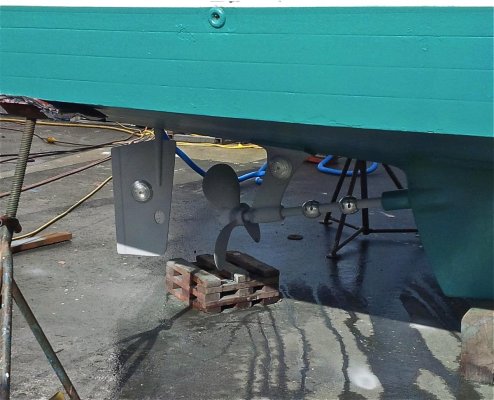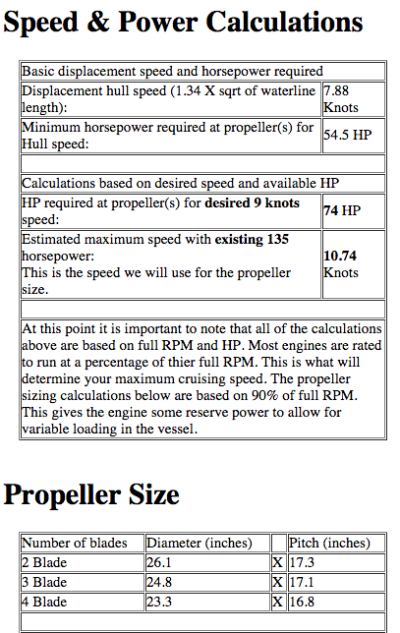rochepoint
Guru
- Joined
- Apr 4, 2009
- Messages
- 1,747
- Location
- Sidney BC, Canada
- Vessel Name
- Roche Point
- Vessel Make
- 1985 Cheer Men PT38 Sedan
One of the things on the boat that I have a hard time with is propellor size. When we bought our boat 20+ years ago it came with a 19x21x3 blade prop which you could over-rev by 500rpm over the recommended 2800rpm. We had 2" of pitch added which dropped the max rpm's to 3100.
We would like to gain some speed and reduce our running rpm(2300rpm), our prop now stands at 19"x23" when I do a prop calculation with Victoria Propellor the recommend 24.8"x17.1"x3 blade. As you can see the diameter is quite a bit larger and the pitch is smaller, what I don't understand how this would increase the boat speed to what they say.
If any one else has a PT38 sedan with a 135 Perkins 3.6544M, I would love to hear what prop size you have and what rpm and speed you cruise at.
I have included copies of the prop calculation and a photo of our running gear. Thanks for helping me wrap my head around this, the internet has not been to helpful.
We would like to gain some speed and reduce our running rpm(2300rpm), our prop now stands at 19"x23" when I do a prop calculation with Victoria Propellor the recommend 24.8"x17.1"x3 blade. As you can see the diameter is quite a bit larger and the pitch is smaller, what I don't understand how this would increase the boat speed to what they say.
If any one else has a PT38 sedan with a 135 Perkins 3.6544M, I would love to hear what prop size you have and what rpm and speed you cruise at.
I have included copies of the prop calculation and a photo of our running gear. Thanks for helping me wrap my head around this, the internet has not been to helpful.




 . I would ponder how much speed is going to be available with finding the correct wheel when the power is rated at 135 hp on a boat this size with these dimensions.
. I would ponder how much speed is going to be available with finding the correct wheel when the power is rated at 135 hp on a boat this size with these dimensions. 
